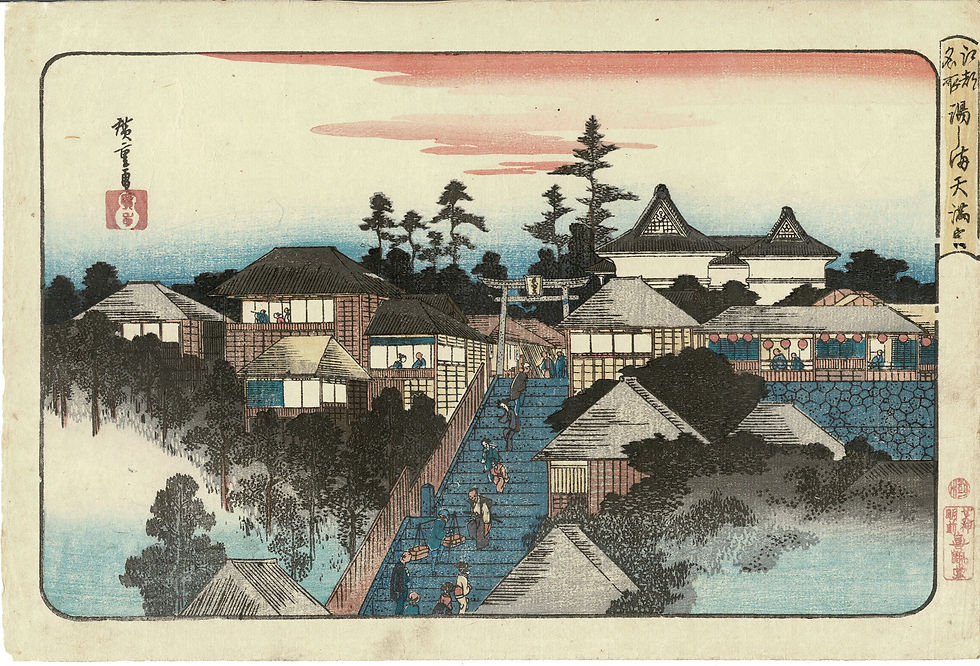Artist: Kokintei Banzan
Title: Chinese warrior and monkey
Date: 1824
Signed: Kokintei Kanshi (?)
Format: Shikishiban surimono
Size: 7 1/2'' x 6 7/8''
Fine impression, color, and condition. Two tiny wormholes near the signature.
This surimono has a long list of ownership (provenance), #1 under investigation in black on the reverse lower right, and #2 Albert Maroni (red seal lower right on front). #3 Edythe Polster. #4 Edo Gallery. See page 215 in Images from the Floating World by Dr. Richard Lane for a short list of collector's seals.
The Chinese warrior is holding a tasseled silver mirror, which the poem identifies as a Shomakyo, or mirror that makes evil spirits visible. The mirror reveals to him that his opponent is actually a monkey; the picture may illustrate an episode in the novel Saiyuki "Chronicle of a Journey to the West," in which Yuan Zhong, a seventh-century Chinese priest, travels to India in search of Buddhist scriptures with Songoku, a monkey possessing supernatural powers who could assume human form. The presence of a monkey suggests that the picture may have been designed in a Monkey year, either 1824 or 1836. The drawing style and the fact that the artist's other prints were published in the 1820s make the choice of 1824 more likely. The artist wrote the poem, and the word kosan that follows it probably means "oral composition."
Mizu no ue no tsuki tomo miyuru shomakyo majraba te nimo torarezarikeri
"The moon on the water was also seen in the magic mirror, but the hand could not grasp it."
Courtesy of Surimono from the Chester Beatty Collection by Roger S. Keyes 1987 pg 24-25 #2157. Another impression is illustrated, in plate 1, pg. 44 and in color, pg. 51 in The Art of Surimono Privately published Japanese woodblock prints and books in the Chester Beatty Library, Dublin, two volumes, by Roger Keyes, 1985.
top of page
$0.00Price
Related Products
bottom of page































